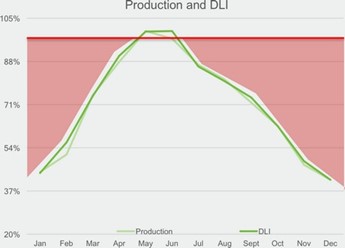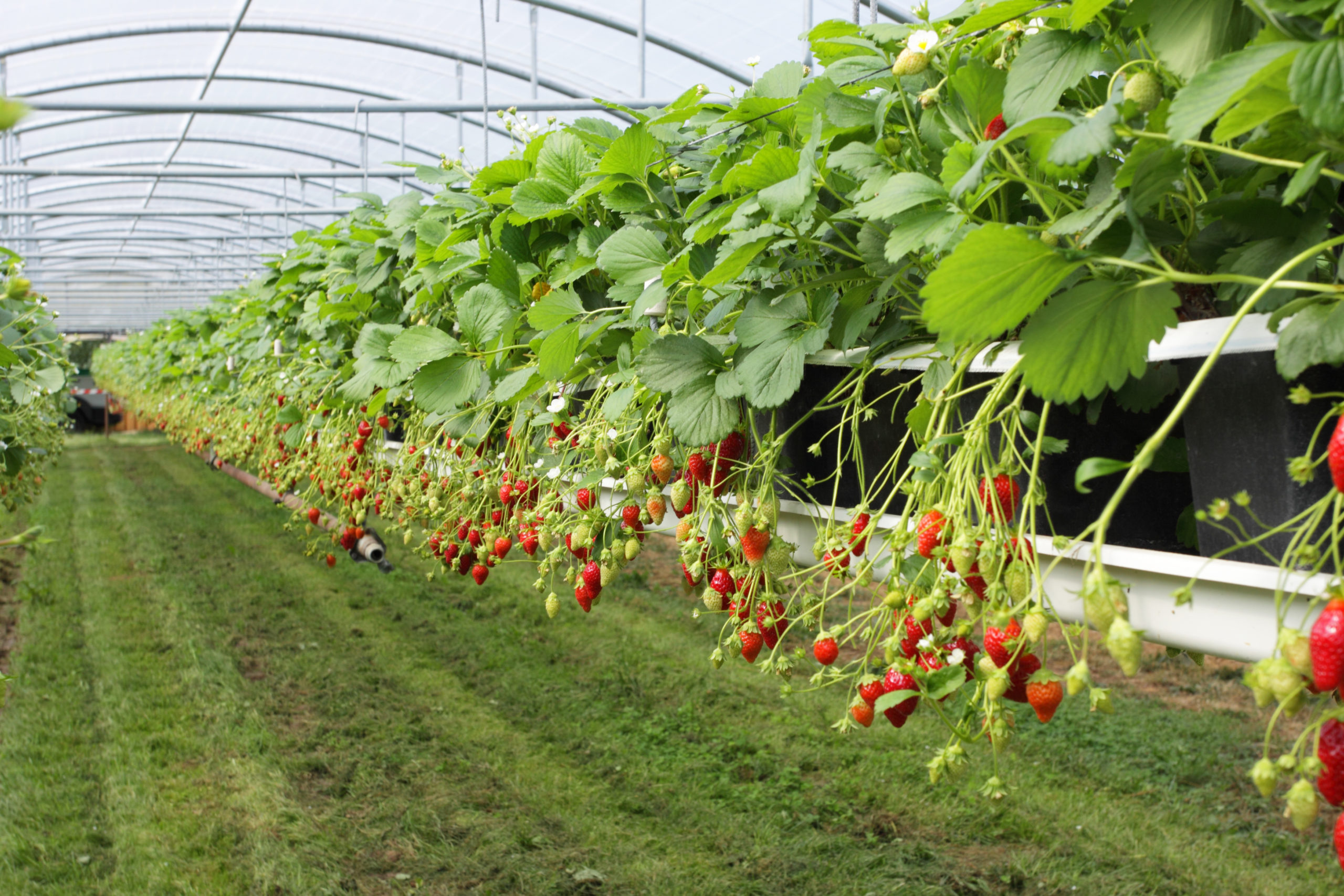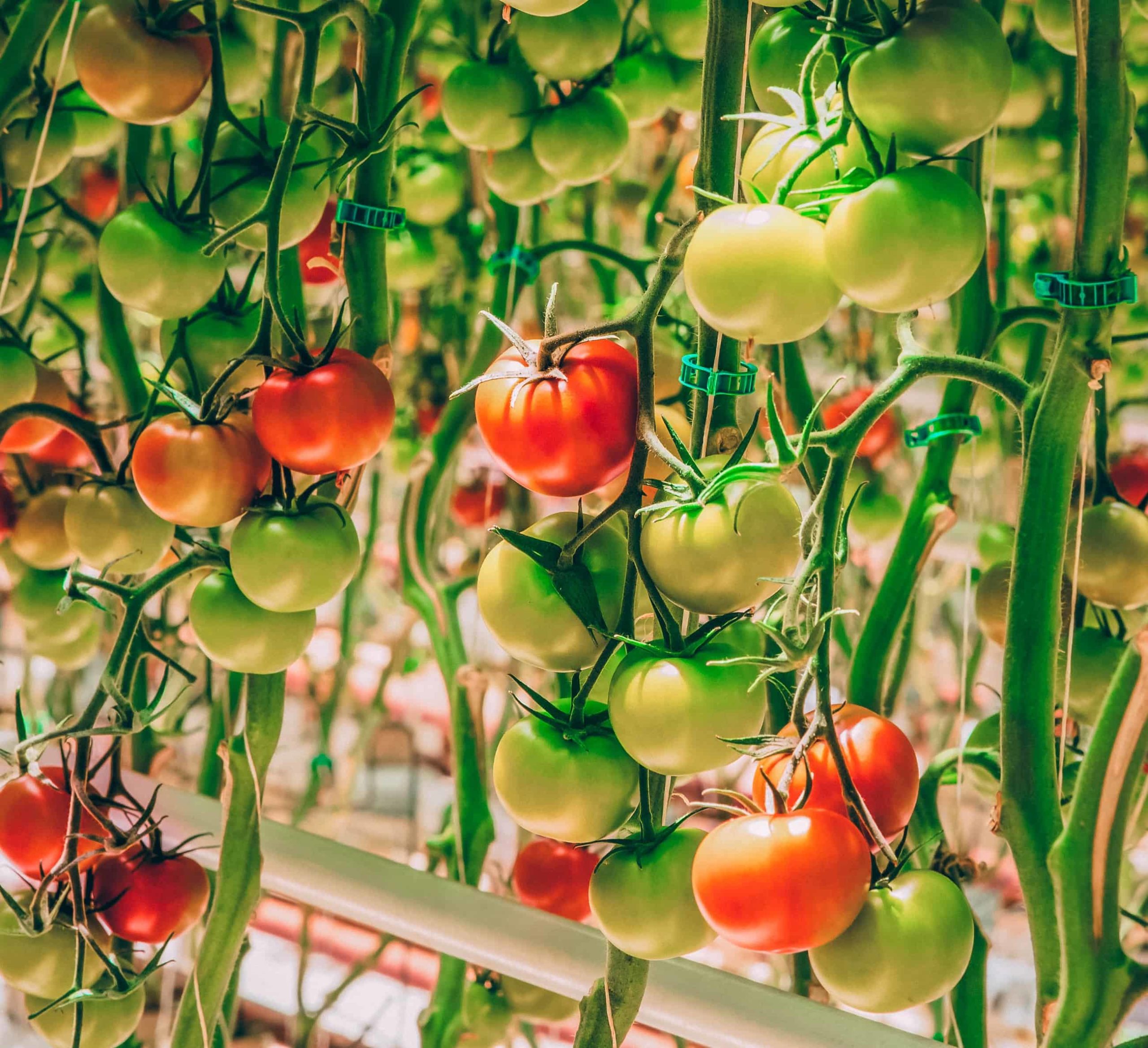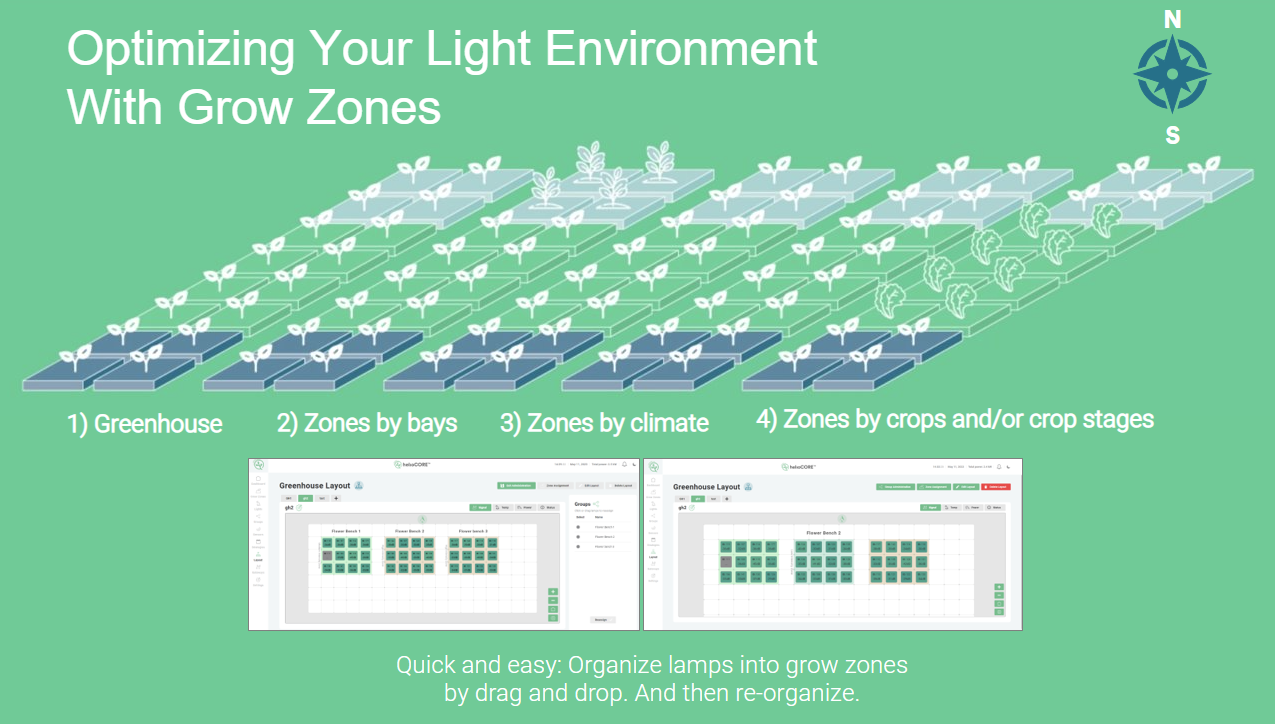Research
Articles
Adjustable-spectra LED lighting systems make it possible to provide crops with near-constant summertime DLI 365 days/year. This strategy can be used to ensure vigorous plants through every stage of growth and deliver quality yields consistently year-round.
If you’re growing tomatoes in a greenhouse with greenhouse growing lights in Guadalajara, Mexico (20.7°N) or the southwestern United States, you might expect a DLI of almost 40 mol/day (60 mol/day outside) in the middle of May. You’ve just had the best day ever—if only you could mimic this perfect light for 364 more days. With a little measuring, the head grower of this operation can use supplemental light to approximate natural summer sunlight conditions.
Plants and DLI Requirements
As we discussed in the previous post, DLI describes the cumulative amount of photosynthetically active radiation (PAR) that shines in a 24-hour period, expressed as mol·m-²·d-¹, or mol/day. DLI will vary daily and seasonally with the angle of the sun and length of the day, factors that are in turn determined by geographic location.
Plants are generally categorized by their DLI requirements into low-light (certain ferns and orchids), medium-light (annuals like bedding plants and flowers), high-light (perennials and vegetables), and very high-light (roses, tomatoes). This is a useful concept to cultivators seeking precision when deciding the crop layout and schedule in the greenhouse.
The Purdue University chart below represents a range of quality for tomato and pepper from a lower average DLI—resulting in minimum acceptability—to a high average DLI that achieves greater finish and consistent yield.
Researchers and growers have observed that increasing DLI generally increases biomass and fruiting, and that’s true up to a certain point. Every plant has a threshold, beyond which further light exposure may not encourage growth at the same rate.
It is up to every greenhouse operation to determine target DLI based on growth objectives to strike a balance between underlighting, which may result in anemic production, and overlighting, which may stress plants and yield diminishing returns. Of course, target DLI alone does not dictate the final harvest numbers; the interactions of temperature, CO2 levels, and fertigation must also be accounted for in addition to the plants’ light needs.
Calculating The Need for Supplemental Lighting
Over the course of a January day, a tomato greenhouse grower in the southwestern United States may be measuring sunlight at 13 mol/day (20 mol outside). For this year-round production facility, that’s more than enough for seedlings in the propagation stage (6-8 mol/day), but not enough to support higher quality fruit production at 20+ mol/day. How would we model supplemental light?
Photosynthetic photon flux density (PPFD) is the amount of light being delivered to a surface. If we know the PPFD at the crop is an even spread of 300 µmol·m-²·s-¹ (and indeed our lights are spaced for this footprint), with a target DLI of 25 mol/day, a quick calculation shows we should run our lights for about 12 hours on that day.
It’d be a waste to shine supplemental light when natural sunlight is adequate, so we typically break up the lamp run time between midnight to morning and then again in the late afternoon.
Since DLI is cumulative, our supplemental light does not need to meet the plant continuously. For a day-neutral plant like tomato, this strategy allows us to take advantage of the cheaper, evening electricity rate. A tomato receiving 25 mol/day will reach harvest grade faster than its 13-mol/day counterpart, which is of further benefit during a time when winter wholesale premiums are higher as well.
Strategizing around DLI Makes Economic Sense
Supplemental lighting isn’t just for January, though. Making use of our grower’s historical averages for monthly DLI and harvest production, we see a significant increase in yield as more natural light becomes available. Using supplemental lighting to reach target DLI 365 days a year equalizes low-light months with the sunniest of days.

Twenty-year historical yields and climate control system data for a greenhouse in the southwestern U.S. demonstrate that months with higher DLI correspond to a greater tomato harvest. These numbers also demonstrate that even in a high light area greenhouse, the majority of the year is still under the target DL
Ready to increase production, quality, and sales with a customized lighting strategy?
If yes, fill out the form below!


